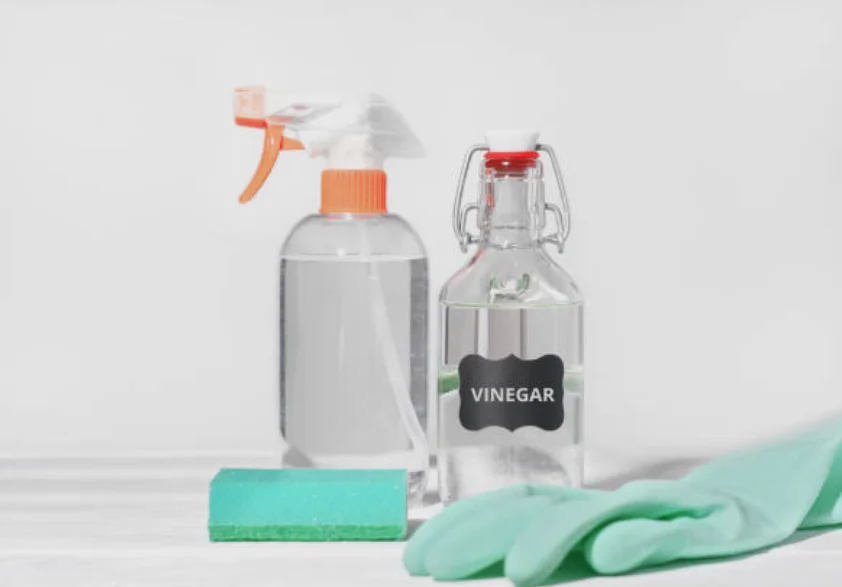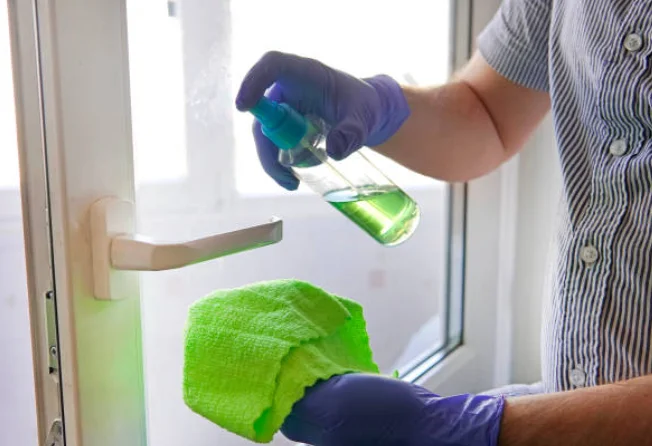Are you tired of streaky, cloudy windows after cleaning? It might be time to ditch the harsh chemicals and switch to a natural alternative: vinegar. Not only is vinegar an eco-friendly option, but it’s also incredibly effective at cutting through grease and grime, leaving your windows sparkling clean.
In this guide, we’ll walk you through the simple steps of cleaning your windows with vinegar, along with some tips, tools, and FAQs to ensure you achieve streak-free results every time.
Why Vinegar?
Vinegar, especially white distilled vinegar, is a powerhouse when it comes to cleaning. Its acidic nature helps dissolve tough stains and dirt, while also disinfecting surfaces. Plus, it’s safe to use around pets and children, making it an ideal choice for households looking to minimize their environmental impact.

Tools You’ll Need
Before we dive into the cleaning process, let’s gather the necessary tools:
White Distilled Vinegar: This will be your main cleaning agent. Make sure it’s white distilled vinegar, as other types may contain impurities that can streak your windows.
Water: You’ll need water to dilute the vinegar and rinse your windows.
Spray Bottle: Fill a spray bottle with a mixture of vinegar and water for easy application.
Microfiber Cloth or Squeegee: Choose a high-quality microfiber cloth or squeegee to wipe away the cleaning solution and prevent streaks.
Bucket: If you prefer using a bucket and sponge for cleaning, make sure to have one on hand.
Let’s get started now that you’ve got the tools ready!

Step-by-Step Guide
Prepare the Cleaning Solution: Mix equal parts white distilled vinegar and water in a spray bottle. For particularly dirty windows, you can increase the vinegar concentration slightly.
Apply the Solution: Spray the cleaning solution onto the window surface, covering it evenly. Make sure to avoid spraying in direct sunlight or on a hot day, as this can cause the solution to dry too quickly and leave streaks.
Wipe Away Dirt: Use a microfiber cloth or sponge to gently scrub away any dirt or grime on the window.
Squeegee or Dry: If using a squeegee, starting from the top, drag it down the window in a straight, vertical motion, wiping the blade clean after each pass. If you prefer to dry with a microfiber cloth, use a circular motion to buff away any remaining streaks.
Repeat if Necessary: For especially dirty windows, you may need to repeat the process to achieve the desired level of cleanliness.

Conclusion
Cleaning your windows with vinegar is not only effective but also environmentally friendly. By using simple household ingredients and the right tools, you can achieve streak-free, sparkling windows without the need for harsh chemicals. So next time your windows need a good clean, reach for the vinegar and enjoy the results!
Frequently Asked Questions (FAQs) about How To Clean Windows With Vinegar
How often should I Clean my Windows with Vinegar?
Generally, cleaning windows every few months is sufficient, but you may need to clean them more frequently if you live in an area with high pollution or if your windows get dirty quickly.
Can I use Vinegar on all types of Windows?
Yes, vinegar is safe to use on most types of windows, including glass, vinyl, and aluminum frames. However, avoid using vinegar on natural stone surfaces, as it can cause damage.
Is White Vinegar Good for Cleaning Windows?
Yes, white vinegar is excellent for cleaning windows due to its acidic properties that cut through grime and leave surfaces sparkling clean.
Will Vinegar leave a Strong Odor?
Vinegar has a strong smell initially, but it dissipates quickly once the windows are dry.
How to use Vinegar to Clean Window Screens?
Yes, you can use a vinegar and water solution to clean window screens. Spray the solution onto the screen and gently scrub with a soft brush or sponge, then rinse with water and allow to air dry.
Will Vinegar Damage Window Tint?
Vinegar is safe to use on window tint, but it’s always a good idea to test it on a small, inconspicuous area first to ensure compatibility.
How do you Clean Windows with Vinegar without streaks?
To clean windows with vinegar without streaks, mix equal parts white vinegar and water, apply with a spray bottle, then wipe with a microfiber cloth or squeegee.
How to Clean Windows with Vinegar and Baking Soda?
Combine vinegar and baking soda into a paste, apply to windows, scrub gently, then rinse with water for a natural and effective cleaning solution.
What is the best way to Clean Windows without streaking?
The best way to clean windows without streaking is to use a vinegar-water solution and a microfiber cloth or squeegee, ensuring thorough drying for a streak-free finish.

